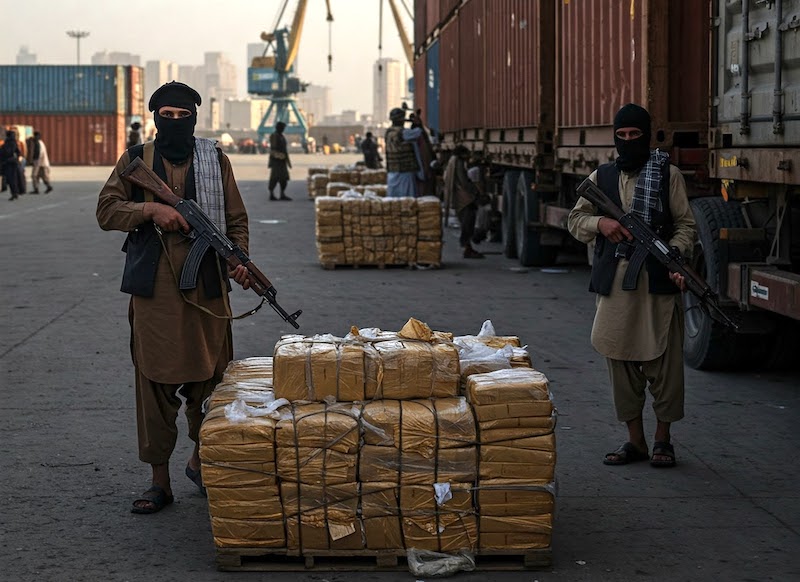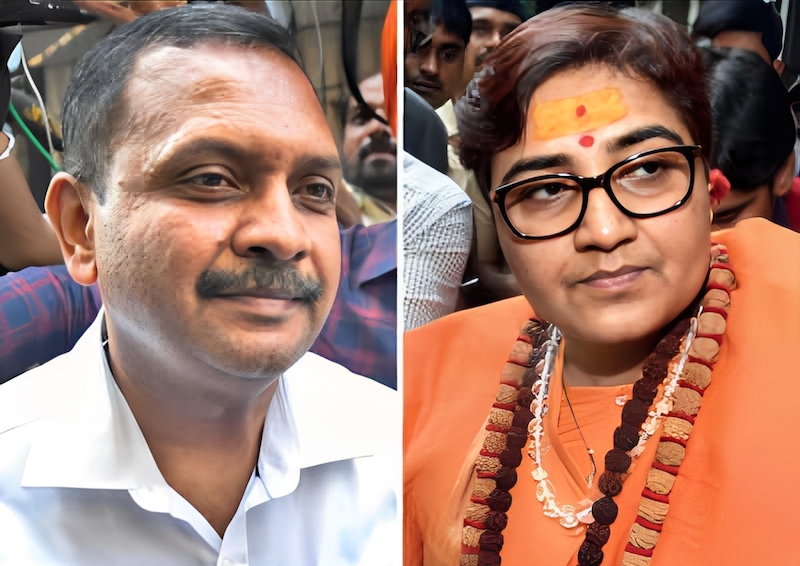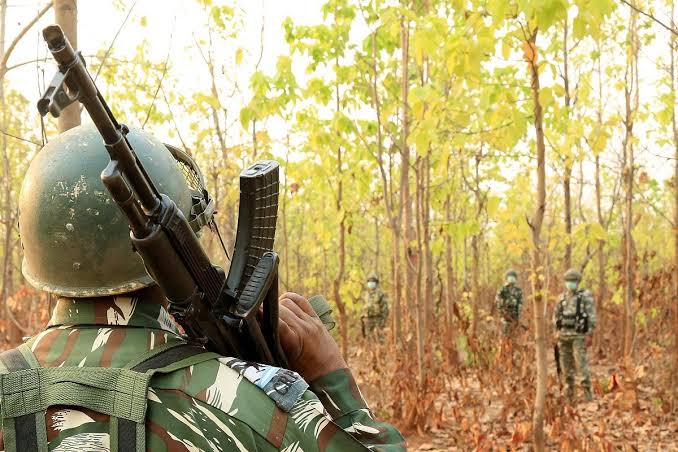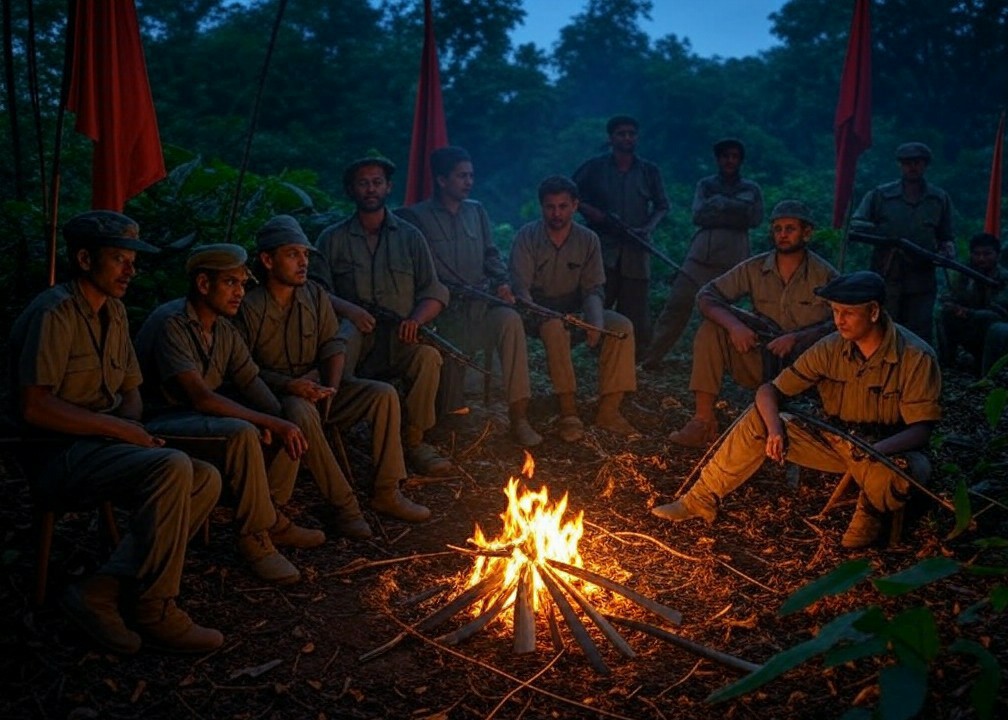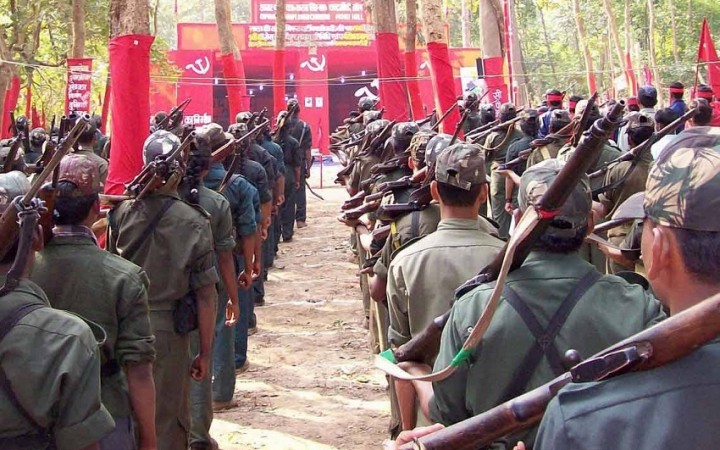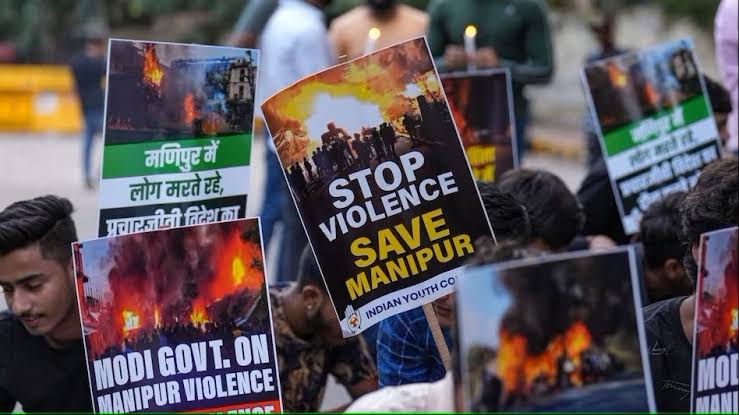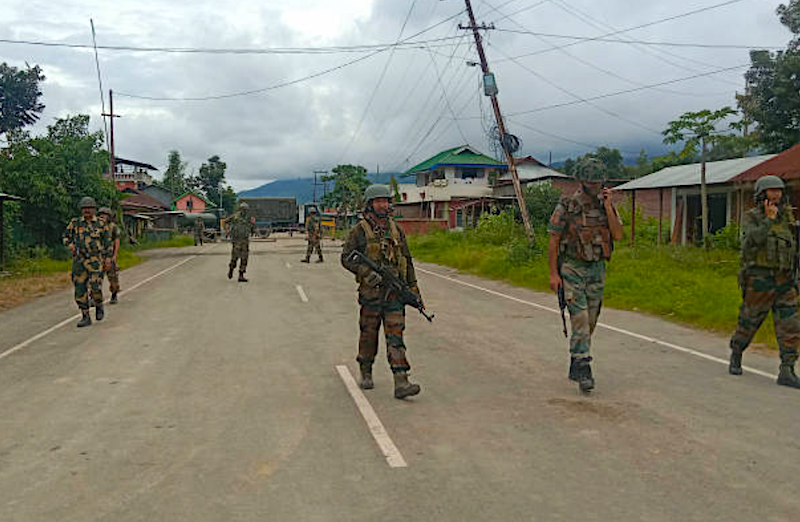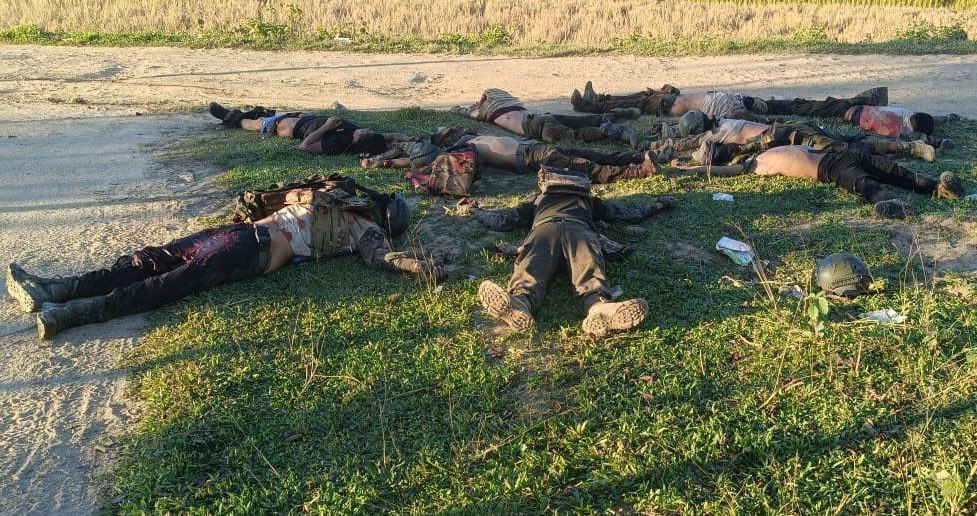 Security forces during a search operation to hunt the Pahalgam terrorists. (Photo via X)
Security forces during a search operation to hunt the Pahalgam terrorists. (Photo via X)
New Delhi: In the wake of the deadly terrorist attack in Pahalgam that claimed 28 lives on April 22, 2025, Indian security forces have launched multiple counterterror operations across Jammu & Kashmir while the prime minister, Narendra Modi, has chaired a high-level security meeting with top defence officials. The prime minister has reportedly granted the armed forces “complete operational freedom” to respond to the attack, amid growing tensions between India and Pakistan.
This is the second high-level meeting Modi has held following the Pahalgam massacre after the Cabinet Committee on Security (CCS) meeting, which he chaired on April 23.
Intensified Counterterror Operations in Kashmir
As many as four counterterrorism operations are simultaneously underway across Kashmir, officials confirmed on Tuesday, as part of an intensified security crackdown following the Pahalgam terrorist attack last week. According to defence sources, two of these operations are continuations of earlier encounters, while two fresh operations have been initiated in south Kashmir.
According to available information, a major operation is currently taking place in the Yarwan forest area of Shopian district in south Kashmir, involving a significant deployment of security personnel. The joint operations are being conducted by specialized units of the Indian Army and the Jammu & Kashmir Police, with particular focus on the southern districts where terrorist activities have seen a concerning rise.
“Security forces have significantly strengthened their presence in Shopian and Pulwama districts,” a senior security official said on condition of anonymity. “Extensive searches and combing operations are being conducted in densely forested and rural zones where terrorists might be hiding.”
The operations face considerable challenges due to the terrain. Defence analysts point out that the dense jungles in the upper reaches of the Pir Panjal range provide ample cover for terrorists. “Visibility in these jungles is so poor that it is difficult to spot movement even 100 metres away,” said a security expert familiar with the region. “This makes tracking down suspects extremely difficult without robust technical and human intelligence support.”
In recent years, the armed forces have suffered significant casualties while pursuing terrorists in these jungles. More than 50 Army personnel have lost their lives in encounters with terrorists in Jammu’s Poonch, Rajouri, Kathua, and Doda regions, highlighting the dangers involved in these operations.
Intelligence sources suggest that the Pahalgam attackers were highly trained terrorists, likely sent from across the border. At least three of the attackers are suspected to be from Pakistan. These terrorists operate with stealth, live off the land, and use advanced communication devices that make detection challenging.
Security Clampdown Across Tourist Destinations
As part of sweeping security measures implemented since the attack, authorities have shut down nearly 50 public parks and gardens located in vulnerable areas across Kashmir. Gates have been locked at 48 out of 87 public parks and gardens identified as sensitive.
Several popular tourist destinations have been temporarily closed to visitors. These include Doodhpathri, Kokernag, Duksum, Sinthan Top, Acchabal, Bangus valley, Margan Top, and Tosamaidan. Many of these locations had been actively promoted as alternative tourist circuits in recent years but are now considered high-risk areas following the Pahalgam attack.
“This is a preventive measure to ensure no further attacks can target tourists who remain in the valley,” a senior tourism department official said while talking to reporters. “The safety of visitors is our topmost priority at this moment.”
The Pahalgam Attack: A Week Later
These security measures come exactly one week after the deadly terrorist attack at Baisaran meadows near Pahalgam, a popular tourist spot in south Kashmir’s Anantnag district. On April 22, five armed militants entered the area and opened fire at visitors, killing 27 tourists and a local pony-ride operator, Syed Adil Hussain Shah, who tried to stop one of the attackers by wrestling his gun. Among those killed were a Nepali citizen, an Indian Navy officer, and an Indian Air Force airman, who were holidaying at the Pahalgam meadows at that time. Dozens more were injured in the attack. The tourists had come to the valley during the spring season, which is traditionally considered a safer time for travel.
The attack took place in Baisaran valley, approximately 7 kilometres from Pahalgam town. The area, surrounded by dense pine forests, is only accessible by foot or horseback and has minimal security presence. According to eyewitnesses, the attackers, armed with M4 carbines and Kalashnikov rifles and wearing military-style uniforms. They reportedly targeted Hindu males specifically.
According to survivor accounts, the attackers asked victims their names and religions before shooting them. Some tourists reported being asked to recite the “kalima” (Islamic verse that proclaims declaration of faith, specifically the core belief in the oneness of Allah (God) and the prophethood of Muhammad) so that militants could segregate them by religion.
The Resistance Front (TRF), believed to be an offshoot of the Pakistan-based terrorist group Lashkar-e-Taiba, initially claimed responsibility for the attack, stating it was in opposition to Indian government policies allowing non-local settlement in the region. However, they retracted this claim four days later.
Cross-Border Infiltration Concerns
Security experts emphasize that tackling cross-border infiltration is crucial to preventing such attacks in the future. “Hunting down terrorists once they have infiltrated and hidden in the jungles of Jammu & Kashmir is a Herculean task,” noted a retired Army general with experience in counterinsurgency operations. “What needs to be done is to prevent them from crossing over in the first place, which requires a robust counter-infiltration grid.”
India and Pakistan share over 3,300 kilometres of border, with nearly 1,000 kilometres in the Union territory of Jammu & Kashmir alone. Securing this border against infiltration remains a significant challenge for Indian security forces.
Modi Chairs High-Level Security Meeting
Meanwhile, the prime minister, Narendra Modi, chaired a crucial meeting with the defence minister, Rajnath Singh; the national security advisor, Ajit Doval; the chief of defence staff, General Anil Chauhan; the Indian Army chief, General Upendra Dwivedi; the Indian Navy chief, Admiral Dinesh Kumar Tripathi; and the Indian Air Force chief, Air Chief Marshal Amar Preet Singh, at his 7 Lok Kalyan Marg residence in New Delhi on Tuesday. The meeting was specifically convened to discuss the security situation following the Pahalgam terror attack.
During the high-level security huddle, Modi affirmed India’s national resolve to deal a “crushing blow” to terrorism and expressed complete faith in the armed forces’ professional abilities. According to some officials who attended the meeting, the prime minister has granted the forces “complete operational freedom” to decide on the mode, targets, and timing of India’s response to the terror attack.
“The prime minister has placed his full confidence in the capabilities of our armed forces to deliver an appropriate response,” a senior government official familiar with the discussions told reporters. “The forces have been given a free hand to plan and execute operations as they deem necessary.”
Earlier on Tuesday, the Union home ministry also convened a separate high-level meeting with security chiefs of the Border Security Force (BSF), Central Reserve Police Force (CRPF), and National Security Guard (NSG) to review the security situation and coordination among various agencies.
The series of high-level meetings comes against the backdrop of escalating tensions between India and Pakistan. Following the Pahalgam attack, India accused Pakistan of having a hand in it and took several measures, including suspending the Indus Waters Treaty, expelling Pakistani diplomats, and closing borders.
Pakistan has denied India’s accusations and retaliated by suspending the Shimla Agreement, restricting trade, and closing its airspace to Indian aircraft. Cross-border firing between Indian and Pakistani forces have already been reported along the line of control (LoC) since April 24.
Meanwhile, the leader of the opposition, Rahul Gandhi, has stated that the entire opposition supports the government's response to the Pahalgam attack, indicating a united national stance on the issue.
As security operations continue and diplomatic tensions rise, the international community is watching closely. China has called for both India and Pakistan to exercise restraint, stating that harmonious coexistence between the two neighbours is vital for the region’s peace, stability, and development.
Meanwhile, the president of the United States, Donald Trump, made a bizarre-sounding remark but expressed optimism that New Delhi and Islamabad would figure out to resolve the tension between them.
On Friday, he said: “I am very close to India, and I’m very close to Pakistan, and they have had that fight for a thousand years in Kashmir,” adding, “There have been tensions on that border for 1,500 years. It has been the same … but I am sure they will figure it out one way or the other.”

